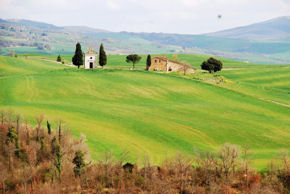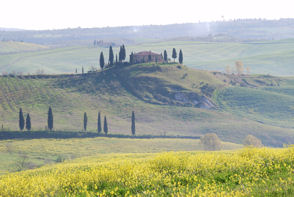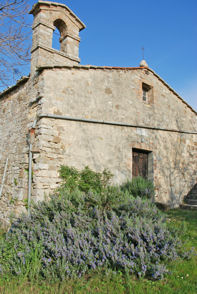Touring
Getting into San Quirico, walking from north through the Dante Alighieri street, you can find the Collegiata Church, a spended building from the XII century. Near the Church you can find the Palazzo Chigi, that hosts now the municipal building, built in the XVII century, Inside the palazzo there are a lot of beautiful wall paintings and at the first floor it hosts the Italian Garden Archive. In front of it you can find the Palazzo Pretorio, where the Natural Artistic and Cultural Park of Val d’Orcia comitee is located. Walking towards south you'll hit the Piazza della Libertà, San Quiricos' main square, with the San Francesco Church and the Porta Nuova, the ancient access to the village. In the same square there are Horti Leonini , a typical garden from the XVI century. During the summer there are a lot of cultural activities in it, such as the “Forme nel Verde”, an important international sculpture exhibition.
Val d’Orcia. Unesco Worldwide Humanity Heritage
The valley is an important natural, artistic and cultural park and from 2nd july 2004 is declared Unesco Worldwide Humanity Heritage, because of its excellent inspiration for many artists from Middle Ages on. The Val d’Orcia deeply influenced the development of the landscape celebrated by senese’s school painters. This is one of the main motivation that Unesco gave to explain its choise.


